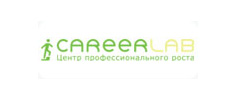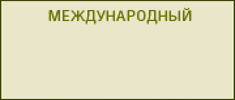List articles
|
№ 2(86)
29 april 2022 year
Rubric: Competition in industry markets Authors: Aleksahin A., Dorofeev O., Ryabinina N., Trubin A., Zubanova A. |
The relevance of the study of the formation of a competitive environment in the payment systems market is due to the current oligopoly of foreign payment systems. The everyday economic life of society is directly relate to the use of money and is determine by the need to consider the issues of using payment systems on the territory of the Russian Federation as a whole and assess the level and problems of their development during the period of digital transformation. The purpose of the study is to explore the Russian market of payment systems that can compete with foreign counterparts. The main task is to study the payment systems used in the Russian market and develop recommendations for promoting the national payment system MIR, as an alternative payment system Visa and Masterсard. In the course of the study, general scientific methods (analysis and synthesis, comparison) and special methods (statistical and economic analysis) were used. The article analyzed business models of electronic payment systems and the structure of cash flows for cashless payments. Three options for the implementation of transactions are considered: with foreign Visa and Masterсard, the Russian MIR card and using the Fast payment system (FPS). The advantages and disadvantages of the MIR payment card in comparison with Visa and Masterсard were analyzed. The significance of national digital currencies and their relationship with payment systems were investigated. As the results of the study, methods of struggle of domestic marketplaces with the oligopoly of foreign payment systems were identified. Based on the conducted competitive analysis of the Russian MIR card, measures were proposed to improve the development of Russian payment systems as a whole in order to popularize them among economic agents of the Russian Federation. Continue... |
|---|---|
| The development of commodity exchanges is promoted as one of main competition policy directions in Russian energy markets. Exchange trade has a number of procompetitive effects based on reduction of market transaction costs, as well as on prevention of price manipulations. Those effects in their turn contribute to less painful coping with economic shocks and imbalances, which acquires a special importance amid crisis circumstances of 2020 and 2022. However, exchange trade is connected with its own risks and constraints, in particular under the shortage of liquidity, excessive market concentration or abusive practices supported by a weak regulation. This paper contains the empirical analysis of the dependence between structural and pricing indicators in the markets for natural gas and diesel fuel on Saint-Petersburg International Mercantile Exchange. It is discovered that the excessive concentration in natural gas markets negatively affects price stability and market liquidity – development of this trading segment requires more active involvement of independent suppliers. At the same time, this involvement should be realized not by directive measures but by additional opportunities of exchange trade. This dependence is more complicated in markets for diesel fuel – it is necessary to continue the policy of supporting the volume of liquidity while increasing the attractiveness of the trading conditions for different groups of market participants. As such, there should be different policies to promote commodity exchanges developments in different markets, and those policies may change follow market evolution. At the same time, discretionary anti-crisis measures should be avoided, if they increase uncertainty on commodity exchanges and lower incentives for their development. Continue... | |
| Paper considers the concentration (and competition) and changes in concentration in banking sector of Serbia (without Kosovo and Metohia) in the second half of 2010s and beginning of 2020s. In the first part of work the main theoretical and methodological questions of the research of concentration and competition were presented, and after them the specific characteristics of competition in banking sector, as one of the form of competition. Author emphasizes the importance of the choice of balance variables for the calculation of concentration indices and chooses next variables: total assets, deposits, capital, operating income, and loans. In the next part using the Herfindahl – Hirschman index, one of the most popular methods, it was shown that the degree of concentration is low, although close to moderate. At the end, on the basis of very rare used method it were decomposed the changes of this concentration index into two factors: component of inequality in market shares distribution, and component of the number of banks. It was shown that impacts of these two factors are not equal and vary through the years. All the types of its varying were classified into six groups depending on types of these factors changes and its relationships. Among the six possible types of changes the type VI prevails in many cases (decrease of inequality of market shares and decrease of number of banks where the first change is greater than second). On the other side, in 2021 (I–VI) for all variables type of changes I happens (increase of inequality and decrease of number of banks). Very interesting is also the fact that in general concentration index was not increased, although the number of banks constantly decreased and component of inequality in many cases had greater impact on the changes of concentration index than the component of inequality. Continue... | |
|
№ 2(86)
29 april 2022 year
Rubric: Competition in industry markets Authors: Buimov A., Lyubyashenko S. |
The article outlines the problems of marketing research of a potential market for a startup entering the market. The complexity of analyzing potential demand lies in the lack of information and low reliability of evaluation methods, especially if the product is innovative. The purpose of the study is a comprehensive comparative analysis of methods for assessing the potential startup market, depending on the level of business innovation. The article shows the synthesis of the application of the methodological approach of the theory of industry markets and marketing tools for the study of consumer demand, assessment of the intensity of competition. To achieve this goal, the following tasks were solved: the definition of a startup was given, the boundaries of the local recording market in the city of Novosibirsk were determined; the market structure and competitive environment were assessed using various research methods; the level of economic concentration was calculated. The authors have attempted to systematize various methods of market research with an indication of their advantages and disadvantages to determine the potential niche of a startup. Based on the conducted empirical research, it was found that for existing and non-segmented markets, when a startup has innovative features, it is possible to use any research method. For new commodity markets (services), their circle is narrowing. It is recommended to use the analysis of key queries at the first stage, and TAM SAM SOM at the second stage. The methodology of the theory of industry markets allows not only to analyze the market by key structural parameters, but also to predict the behavior model of a startup company at each stage of its development. Michael Porter's methodology helps to understand the main driving forces, the main risks that can have a positive impact on business development. The right choice of marketing tools determines the success of a beginner in achieving economic targets. The scientific novelty lies in the synthesis of the application of the methodology of the theory of industry markets and marketing tools for the study of consumer demand, assessing the intensity of competition and justifying the feasibility of using each approach depending on the innovativeness of the startup. Continue... |
|
№ 2(86)
29 april 2022 year
Rubric: New business technologies in a competitive environment The author: Chernuhina G. |
Relevance of the research topic. In retail, there is an active introduction of innovations in all segments, in the struggle for survival and efficiency improvement; trading enterprises are actively searching for innovative technologies, primarily IT solutions, for their implementation in trade and technological processes. Modern trends in commercial entrepreneurship are new business models, processes, technologies, products. The introduction of innovations stimulates sales, contributes to the improvement of the organization of the trade and technological process, the analysis of consumer behavior and preferences. Artificial intelligence and data analysis are transforming retail. Technological progress and trade are inextricably linked, and innovations in retail raise business to a new level. The purpose of the study: based on the analysis of various aspects of innovation processes, to identify the main business trends of process innovations in trade and the practice of their implementation in trade and technological processes. The implementation of this goal required solving the following main tasks: to identify groups of process innovations in trade; to present the introduction of innovations in trade as a process and, based on the analysis, formulate the results of the implementation of this process; to explore the prospects of artificial intelligence technologies; to analyze technological business trends on the example of network trade and logistics, etc. The author analyzes the beneficial effect of the introduction of process innovations in trade. The result of the introduction of process innovations in trade is as follows: the efficiency of trade and technological processes increases; turnover and profit increases, labor costs are reduced, the quality and speed of service increases, as well as the number of loyal customers, which ultimately provides competitive advantages. The article also focuses on trends and examples of innovation in online trading. Continue... |
|
№ 2(86)
29 april 2022 year
Rubric: New business technologies in a competitive environment Authors: Gorelova T., Serebrovskaya T. |
This article is devoted to the current trends in the creation of platforms and the formation of digital ecosystems as the next stage of their development. The subject area of the article is a digital platform for the development of logistics activities and bringing the process of organizing entrepreneurial activity to a more advanced, modern “digital” level. The purpose of the study: to substantiate that digital platforms form new algorithms for the interaction of logistics business participants and a new (or modern and digital) business model for the organization of entrepreneurial activity. The article considers a digital platform as a project, technology, product “on demand” or an integrated set of software products. The concepts of “platform”, “digital platform”, “digital ecosystem”, “digital transformation projects” and “transformational project” are revealed. The practical implementation of digital solutions in the logistics sphere is summarized, namely: projects “Electronic navigation seals”, “Robotic sorting”, “Digital assistant of the shunting dispatcher at marshalling yards”, “Technical vision”; products “Smart logistics Cargo”, “Smart Logistics Trans”, “Business Lines: Cargo Transportation” and the integrated software package TMS (Transportation Management System) and WMS (Warehouse Management System). Attention is drawn to the process of obtaining goods and services and how this familiar process with the use of information technology has been transformed into digital platforms. In conclusion, the tasks and functions of the platform are outlined, which is considered as a business model for creating, providing and preserving value for customers. Continue... |



